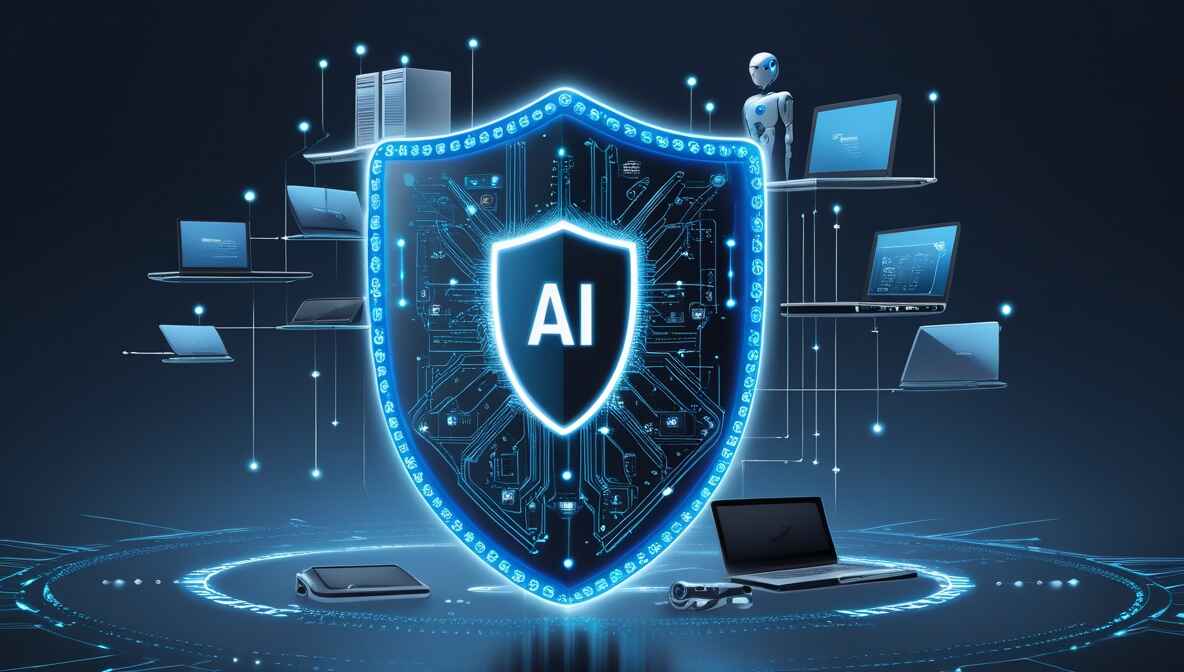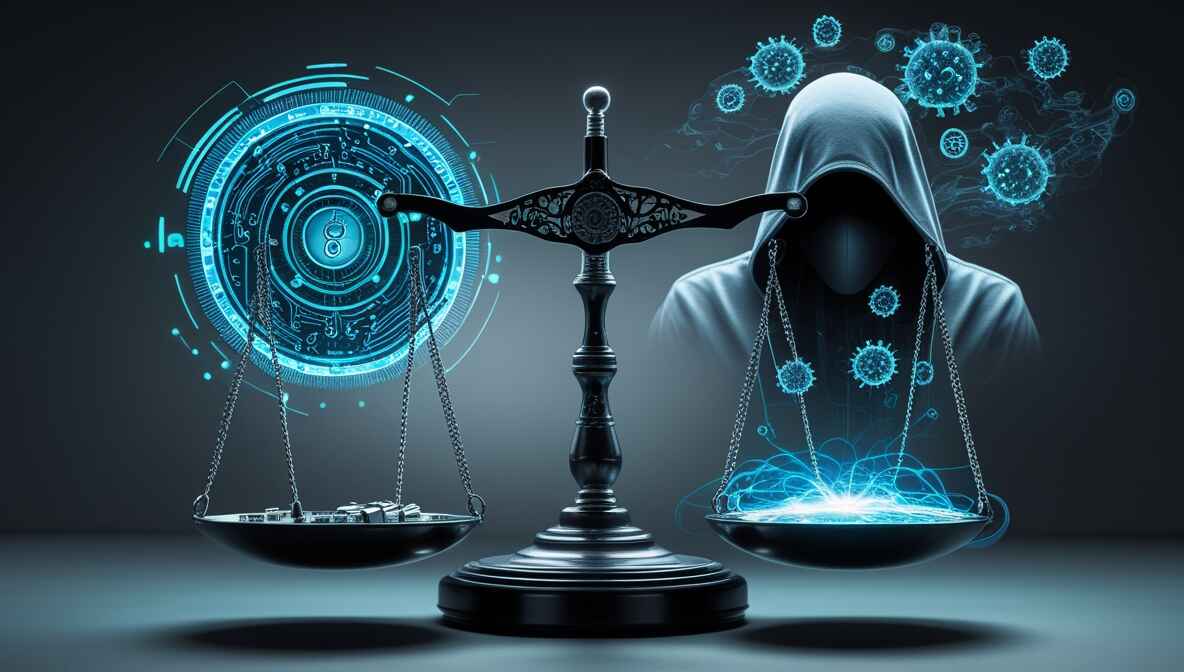AI and Cybersecurity: 10 Key Questions to Ask
Introduction to AI in Cybersecurity
I think AI reshaped the whole cybersecurity scene. AI in cybersecurity refers to using intelligent systems to protect networks, devices, and data. These AI systems may learn, develop, and also undertake decisions to enhance security levels.
To address and fully understand the AI benefits and thus assess the drawbacks of their application as part of the systems we use to safeguard information we are interested in, it is trellis to listen to the talk of this modern age.

The Impact of AI on Cybersecurity Strategies
AI has become a more visible part of the technological discourse in security technologies with my experience. I have observed significant modifications of the positive as well as negative nature of security systems.
AI is a robust method that helps companies make the already complex data mining a cakewalk. The program can separate anomalies from true negatives by learning from large data sources, and the predictions of the program are quite close to the human-like ones.

10 Key Questions About AI in Cybersecurity
1. How does AI enhance threat detection?
I have encountered Artificial intelligence (AI) as a tool, which processes and examines data significantly faster than humans do.

This velocity and exactness, have changed the whole mindset about spotting out threats according to my previous practices.
2. What are the potential risks of using AI in cybersecurity?
Apart from a great list of AI benefits, I am quite aware of this technology’s cons. One of the main worries is the probable hacking of AI tools or their malpractice. The hacker might take control of a system that uses AI and breach the security features.

In the same vein, AI systems can introduce new vulnerabilities that are not typically found in traditional systems.
3. How can AI help mitigate false positives?
One of the best outcomes for me was the application of AI when it comes to reducing false positives. AI models, by learning from historical and current data, become adept at distinguishing between genuine cyber incidents and benign activities.
Such a wonderful event has brought our team a level of access that we were able to devote to the thinking of more important troubles and investigations.
4. What data is used to train AI in cybersecurity?
A good example of the datasets, I watched before the AI models training were made up of a variety of sources, including historical traffic data, logs from the network, and known attack patterns.
The data being used as training data must be good as well as well as being neutral to allow AI to adequately point out numerous threats. Datasets are meanwhile, being updated to keep pace with the emerging threats.
5. How does AI impact Zero Trust security models?
AI has been highly effective in my involvement with the Zero Trust models. It’s a tool that guarantees the enforcement of these models by on-the-fly verification and authentication of every user and device.
Through the use of AI, the system can link real-time modification of the system’s dynamic and the violation of the security, thus besides the fact that AI supports the approach, it also introduces the implementation of Zero Trust principles.
6. What measures are in place to secure AI systems themselves?
At work, we always give the highest priority to the security of AI systems. Our system is equipped with access controls, strong encryption, and a system of regular security audits.
On the other hand, it is important to be vigilant and monitor for signs of compromises in AI systems as well. Specifically, solutions such as adversarial training help in making AI algorithms resistant to adversarial manipulation.
7. How does AI help in responding to emerging threats?
AI has been the leader in dealing with new threats rapidly. AI, the technology of today’s threat speed problem, can be used for victory through buffered keystrokes, screen sensitivity on multiple coordinates as well as network file exchange, bridging present gaps in employee traffic and the security system. It can adjust its defense strategies to new real-time threats circled, thus initializing the fight against zero-day exploits, as well as finding new molesters unnoticed by traditional systems.
8. What skills do cybersecurity professionals need in the AI era?
From my perspective, one of the main components is hybrid expertise in cybersecurity and AI which is being increasingly noticed. Data analysis, machine learning, and AI ethics are areas that are becoming more and more important as organizations accelerate their digital transformations.
Similarly, this requires our skills to grow with the understanding of the cautions necessary for AI systems as well as the usage of AI-generated data.
9. How does AI affect incident response times?
The steepest speed improvement has occurred in AI upon the occurrence of an incident. It may not be out of being an automatic mode that AI systems can identify the insecurity of a system in contact and by that time, there is no human intervention involved.
Since the days we have introduced this feature, I have noticed that this instant reaction feature has rescued most of the systems, making the number of breaches cut down considerably.
10. What ethical considerations arise with AI in cybersecurity?
Ethics in human tasks is one of the points that all the seminars I lead must cover when putting AI into cybersecurity. This should not lead to a situation where we let security trample on human rights, but we should achieve a balance of the two.
Notorious issues, such as the bias of AI in decision-making and the good and bad of AI used in surveillance, are the most common, the issues can be devastating. For this, I always propose the relationship between the necessity of taking responsibility and the need for transparency in the architecture of AI systems.
Case Studies: AI in Action
Firsthand, I have seen how AI has made its contributions to the world of cybersecurity. A well-known situation refers to a great financial institution that thanks to the effectiveness of an AI-based system could prevent a real phishing attack that had a more common protection system not caught.
In the second instance, a provider of healthcare improved the privacy of patient data when AI was used to secure mobile access to patient data by decreasing data breaches.
The Future of AI and Machine Learning in Cybersecurity
From now on, I am going to tell you some wonderful things about AI and ML applications for cybersecurity. I can see a new level of advanced innovative models with predictive capabilities for preventing attacks before they start.
Moreover, automation is likely to make a dynamic impact on security operations with AI tools, which in turn will allow human expertise to be directed in the areas of strategy formation and solving complex problems.

Conclusion: Prioritizing AI in Your Cybersecurity Strategy
In one word, my conclusion would be AI integration. My experience with companies and nonprofits that have AI as a key component in their security shows the incredible empowerment that comes along with AI.
Nevertheless, it is important to remember the double-sidedness of AI applications, where we need to take a comprehensive view of both costs and gains. When we pose proper and competent questions and continually educate ourselves, the full potential of AI can be achieved to secure our digital future even more.
Related Blogs and Resources
To earn additional knowledge, I would advise checking the material from the questions on AI ethics in cybersecurity, the role of model learning in identifying threats, and best practices of AI mergers within offense operations.
In addition to this, it was disclosed that such research intersects with the protective areas on how the module can be used to protect our digital rights.
Frequently Asked Questions (FAQs)
Q1: What is AI in cybersecurity?
AI in cybersecurity allows for the development, through artificial intelligence technology, of cloud computing-based infinitely scalable approaches targeted at networks, devices, and data with an aim at attaining cyber-security.
It comprises algorithms on machine learning that learn new cases and evolve to increase the rate of detection and response to security threats by bundles rather than the old ways.
Q2: How does AI improve cybersecurity?
The primary ways that AI boosts cybersecurity include improved identification of potential threats, a greater reduction in false positives, task automation, and a faster response to incidents. It can analyze large amounts of data, picking out patterns and anomalies that might signal a security problem, generally before human analysts can spot them.
Q3: Can AI be used by hackers?
AI has become an extremely effective weapon in the arsenal of hackers. Cybercriminals can leverage AI to orchestrate elaborate automatic attacks that are either difficult to understand or have a greater capacity for evasion. This is the interface where cybersecurity experts have to stay ahead of the hackers by taking advantage of AI tools.
Q4: What are some challenges of using AI in cybersecurity?
Some concerns center on the fact that more AI tools might lead to the occurrence of false positives, substantial amounts of data that are both accurate and free of biases are vital, and the AI system’s susceptibility to being manipulated or compromised.
Adding to the already existing challenges is the skills gap present in the niche where these professionals are required to be equally good at AI and cybersecurity.
Q5: Is AI replacing human cybersecurity professionals?
AI is not taking jobs away from cybersecurity professionals but rather is creating a valuable resource for them and redefining their work. AI automates major tasks and speeds threat detection facilitating technician distant service and using human experts to make strategic and risky decisions.
The great role of human experts in interpreting, “What does this provision of AI indicate and how does it lead to cyber-security?” is seemingly an indelible characteristic of the system still.

Hello Readers! I’m Mr. Sum, a tech-focused content writer, who actively tracks trending topics to bring readers the latest insights. From innovative gadgets to breakthrough technology, my articles aim to keep audiences informed and excited about what’s new in tech.